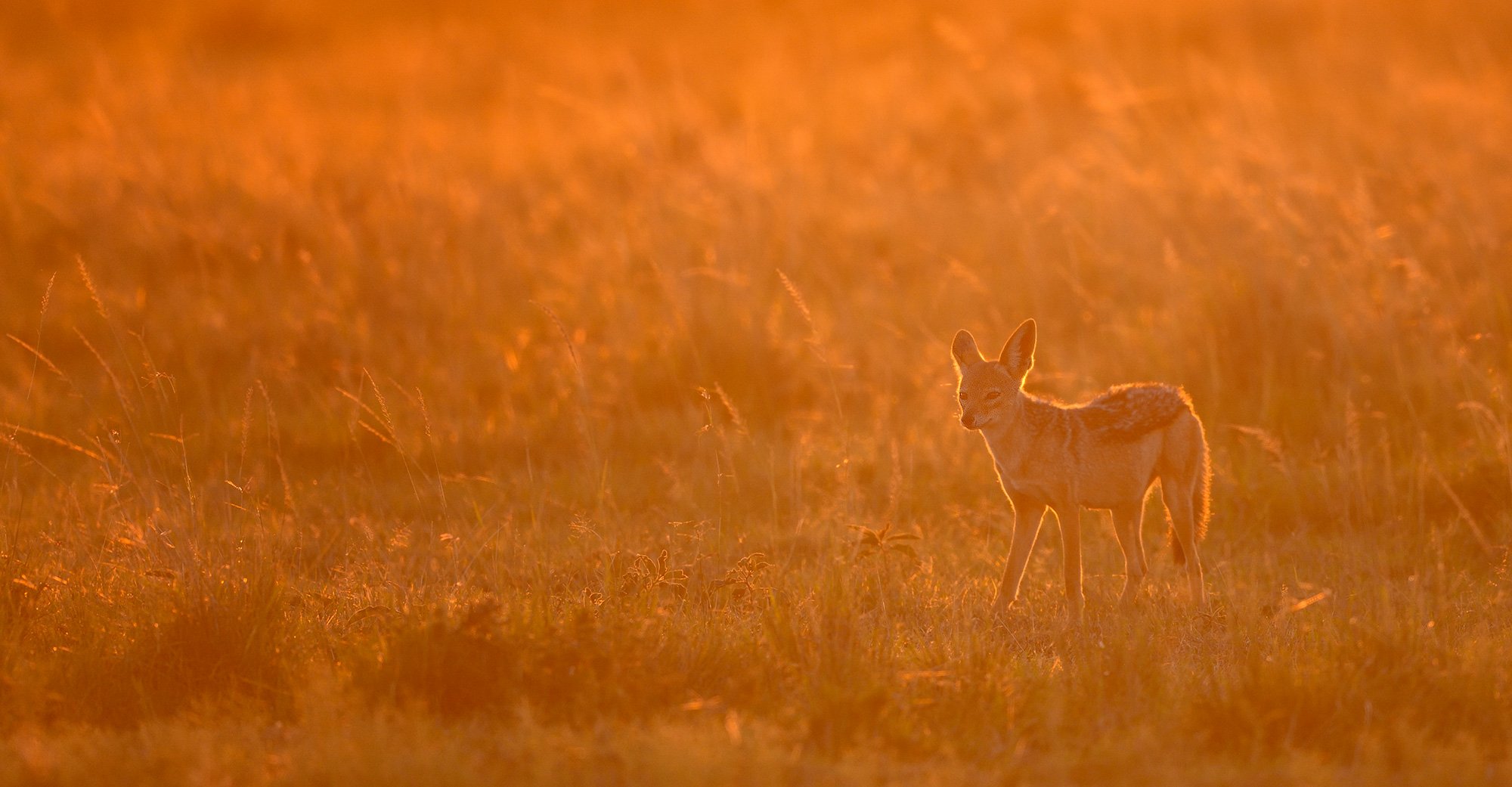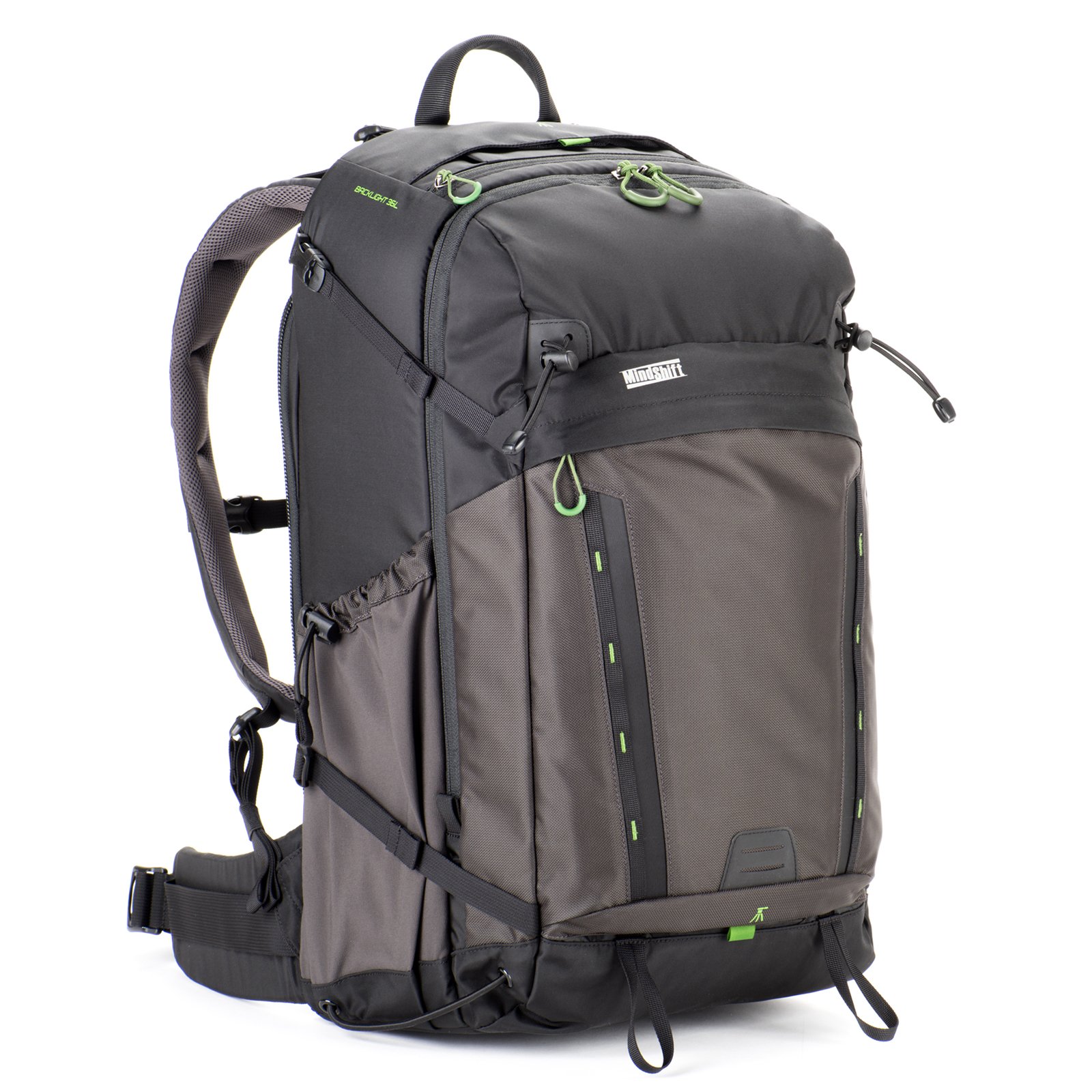The Best Camera And Gear For Kenya Part 2
The Best Camera And Gear For Kenya Part 2
Can money buy time? The answer is yes.
Don't close the page yet.
I meant the answer is yes if you have a 400mm f/2.8.
So our group was split into two land cruisers and we were photographing a black-backed jackal den in one late evening. It was one of those sunsets where you couldn't believe your eyes on how gorgeous the light was. As the light was dropping, the jackal pups were playing with each other nonstop.
I was completely immersed into trying different composition, and was blasting on the camera shutter nonstop in pure bliss. When I looked up again, I realized that one of our two vehicles had already left and went back to the camp.
And also, none of our group in the vehicle was still shooting. They had all stopped for quite a while.
"What? The light is wonderful, the action is great. Why did you guys stop???" I asked.
It's a sin to stop shooting in great light!
"Well, my camera has stopped focusing," one participant said.
"Oh..."
I half pressed the shutter to try. It's working fine. The AF still locked on the jackal instantly.
What's going on? What were they talking about?
Then it dawned on me.
I was holding a magical thing in my hand that defied time...
I was holding a 400mm f/2.8.
Since the lens could let in double the light of a f/4 lens and 4 times the light of a f/5.6, it gave the camera a lot more information (equivalent to the amount of light) to acquire accurate focus in such low light situation.
Just imagine you walked in a dark room and you couldn't see clearly, you could bump into the corner of a table or a chair. But if you turn on the light, you would not as likely bump into those as you can see exactly where they are.
“Eternity is in love with the productions of time.” -William Blake
You may think I am crazy but I think our naked eyes see things very similar to a f/4 lens.
What do I mean by that?
When it gets dark, we no longer could see clearly. Similarly, an f/4 lens fails to auto focus at things around that kind situation.
But any lens with aperture bigger than or equal to 2.8 "sees" much more in low light than our naked eyes. That's why the 400 2.8 continued to focus when everything else failed.
What does that mean?
It means by paying an obscene amount of money to acquire the 400mm f/2.8 (>$10,000!) you are essentially buying extra "time" to shoot. Maybe an extra 5 minutes to shoot.
Even though it’s just 5 mins extra it feels like eternity because I can shoot 9 frames per second with the Nikon D850.
It means I can shoot about 500 photos per minute if I keep on shooting (Minus the buffer).
It also means I can shoot 2500 more photos in sweet ambient light sometimes with crazy colors in the sky that usually happens around sunset times.
If you include that extra 5 mins of sunrise that other lenses wouldn't focus as quickly, I can get 5000 more photos the non-400mm 2.8 photographers 😉 would not be able to get.
And during low light situation, the f/2.8 lens always focus much more accurately than a lens with f/4 or smaller maximum aperture, meaning it can always produce a sharper image in such situation.
If I go to Africa for 10 days, I can get potentially 50,000 more shots. In nice soft dreamy light.
And since it is mostly harsh light other than sunrise and sunset unless it's an overcast day, I don't really care about photos taken in the harsh hours with harsh shadow.
Golden Jackal, Nikon D850, 400 2.8, f/2.8, 1/1250s, ISO 720
So how about the 180-400mm f/4 with the internal 1.4x teleconverter, the ultimate wildlife lens? You may ask.
Well, I have to say that the 180-400 is a very versatile lens. And when in needs, you can just flip the lever and it can get to 560mm f/5.6.
I had the opportunity to compare the images of both lenses because I brought both lenses to Kenya.
The images by the 180-400mm are very sharp. The autofocus speed is very quick.
But compared to the images by 400 2.8, the sharpness of the images in 180-400 looked "weird". They were sharp, but not in the same way as the sharpness of the 400 2.8. The images shot by 400 2.8 looked the most "natural" way of being super sharp, while the 180-400 looked a bit artificial.
Please forgive my very abstract description but I just felt that way. It's very subtle. But if you use both lenses day after day you easily see such huge difference.
If the world doesn't have a 400 2.8, the 180-400 would have been king...
I don't even want to look at the photos taken by the 180-400 once I see those by 400 2.8.
And the bokeh created by 180-400 is inferior to 400 2.8 as you can expect comparing a 2.8 vs a f4 lens.
Don't forget, it's a f/4 lens, meaning that it lets in half of the light, so auto focus is half as slow compared to 400 2.8.
When you have the 1.4x on the 180-400, it became a f/5.6 lens which made it even slower. Some even said they have to stop down to get super sharp images at f/5.6 but I didn't see a big difference at f/5.6, though I see a huge difference no matter what, when compared to 400 2.8.
The 180-400 and 400 2.8 are very similar in price. Why would you choose a f/4 lens vs a f/2.8 lens if you are interested in the fast action world of wild animals who are usually more active in dawn and dusk?
So what about the second must have lens for Kenya?
#2: 70-200 2.8 FL VR
Now that you know how important it is for f/2.8, it's easy to guess my #2 lens. Many would choose the light weight 80-400 (or the Canon 100-400) or the 200-500 lens for the range. But I think having the focal length range means nothing if you can't even autofocus in low light or when you have to use high ISO at f/5.6 or smaller aperture.
In Africa the vastness of landscape is amazing. Some of the big disappointment while photographing in the US is lack of good landscapes at where I see wildlife such as in California. They r usually urban wildlife such as owls on a tree in a city so it’s not easy to get animal smaller in frame to make it work.
So I got stuck with a lot of close up of the animals in the US when the surrounding habitat of the animals didn't add to the harmony.
If the photo doesn't evoke emotion with more habitat I would not try to have animal small in the frame for the sake of it. If the landscape doesn’t harmonize with the animal then it’s a failure.
I know you may still be thinking about the range of 180-400. You actually don’t miss much between 200-400. I first planned to bring a 300 PF f/5.6 to fill in the gap. I never needed it. But the time to switch lens is not feasible.
When you see an opportunity it’s usually already too late to change lens. But the range that covers from 70-200 is very welcomed when you want to include landscape with the animal or when the animals come close (but not too close, otherwise 70 would still be too long).
Nikon D850, Nikon 400 2.8, f/2.8, 1/800s, ISO 64. Amboseli, Kenya.
1/800s, iso 1600, f/2.8 are 3 magical numbers. You need around 1/500s to 1/800s for a sharp Incoming leopard. ISO 1600 for D850 is the limit for 6 feet print without too much noise. You can say D5 and 1dx Mark ii have no noise at iso 8000. Yea I’ve used it. It lost a lot of details too because it has aggressive in camera noise removal algorithm applied.
And since the 70-200 2.8 lens are usually the best selling lens for brands like Nikon, Canon and Sony, they usually have superb image quality and auto focus speed.
(To be continued)
Before I go on, I'm inspired by Tim Ferriss and want to share with you what I've been reading, the quote that I liked, and the gear I enjoyed most lately.
What I've been reading:
I was in Hong Kong for a few days and came upon a magazine interview of one of my favorite Chinese author Ngai Hong. He's one of the most prolific Chinese writer, having written hundreds of sci-fi books and over 400 movie screen plays including Bruce Lee's Fist of Fury. I loved the interview so I dug deeper on his recent books. Turned out I loved his viewpoints on relationships and life very much. If you can read Chinese, I recommend you get this on kindle by clicking the image of the book below.
Quote I love:
I listened to my favorite audio book again today. "War of Art" by Steven Pressfield. In the book he talked about a psychologist who had worked with terminal ill patients. Here's the long quote that made me pondered.
The moment a person learns he’s got terminal cancer, a profound shift takes place in his psyche. At one stroke in the doctor’s office he becomes aware of what really matters to him. Things that sixty seconds earlier had seemed all-important suddenly appear meaningless, while people and concerns that he had till then dismissed at once take on supreme importance.
Maybe, he realizes, working this weekend on that big deal at the office isn’t all that vital. Maybe it’s more important to fly cross-country for his grandson’s graduation. Maybe it isn’t so crucial that he have the last word in the fight with his wife. Maybe instead he should tell her how much she means to him and how deeply he has always loved her.
Other thoughts occur to the patient diagnosed as terminal. What about that gift he had for music? What became of the passion he once felt to work with the sick and the homeless? Why do these unlived lives return now with such power and poignancy?
Faced with our imminent extinction, Tom Laughlin believes, all assumptions are called into question. What does our life mean? Have we lived it right? Are there vital acts we’ve left unperformed, crucial words unspoken? Is it too late?
This is how Tom Laughlin’s foundation battles cancer. He counsels his clients not just to make that shift mentally but to live it out in their lives. He supports the housewife in resuming her career in social work, urges the businessman to return to the violin, assists the Vietnam vet to write his novel.
Miraculously, cancers go into remission. People recover. Is it possible, Tom Laughlin asks, that the disease itself evolved as a consequence of actions taken (or not taken) in our lives?
Could our unlived lives have exacted their vengeance upon us in the form of cancer? And if they did, can we cure ourselves, now, by living these lives out?
And the gear I like most? It's the Thinktank 36L backpack. It's perfect for my trip to Kenya, Alaska and Chile. Many of my friends bought it too after I told them, and they've been loving it. It could fit a 600mm f/4 and a 400mm 2.8 plus two camera bodies, teleconverters, etc, quite easily and fit nicely in airplane overhead compartment.
Tin Man
If you want to be notified of new blog post, please sign up for my newsletter at tinmanlee.com
If you want to see what other gear I use, please check out my gear page and use those links to purchase. (I get about 3% commission if you use those links to purchase so thank you in advance)
If you want to learn how I edit my photos, please check out my 90 minutes free training here.
If you want to transform your wildlife photography, please check out my 3-hour free training here.
I also have written photography e-book and video guides to Alaska, Colorado, and Falkland Islands.







Love your blogs. Love your advice. But what happened with the Lion?????
Tinman ,
Love your photography and your art !!!